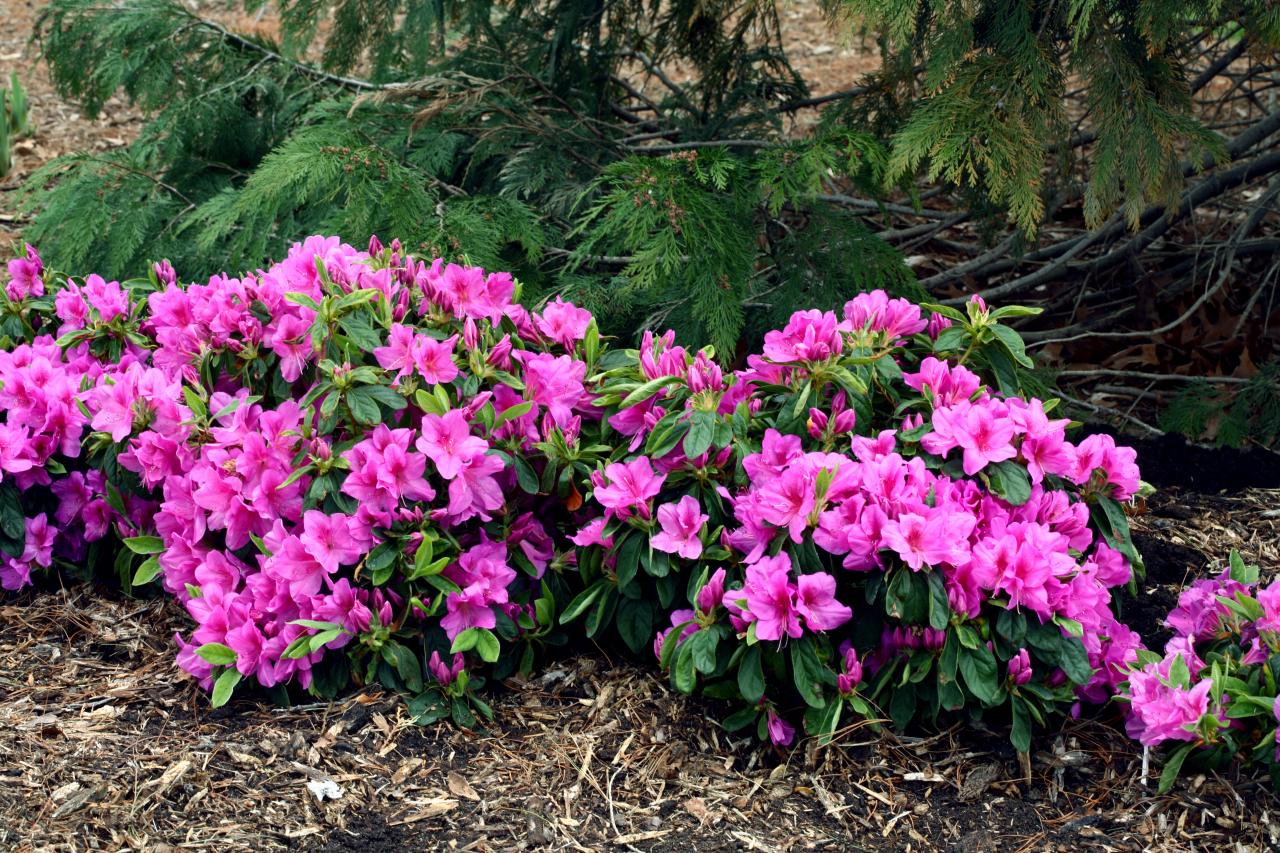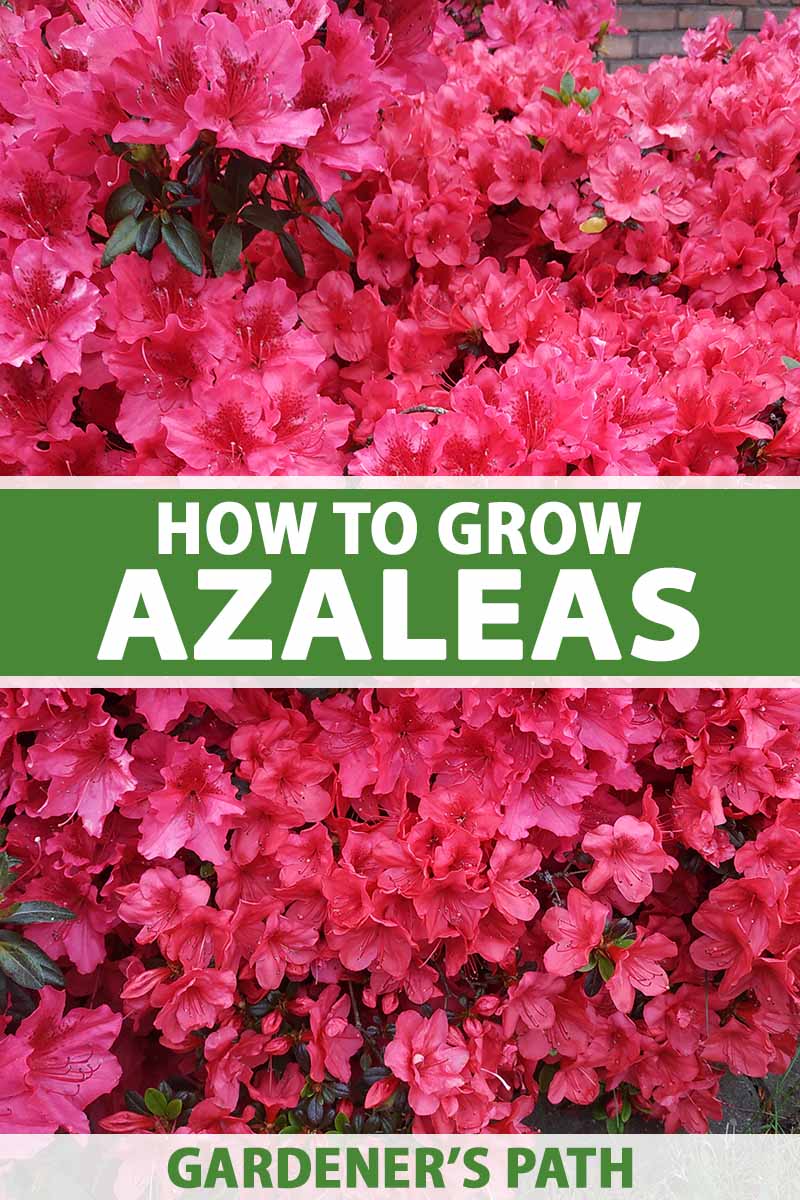In mild, temperate settings, where there is often more cloud cover and less intense sun, azaleas can grow in full sun. However, azaleas will need some protection in regions with high levels of solar radiation because full exposure can cause sunburned leaves and raise the likelihood of dryness.
Azaleas will suffer if they are in direct sunlight in places like California and Southern Europe. However, they will thrive with a few hours of morning sun followed by shade or dappled light in the late afternoon. This will encourage blossoms while still shielding the foliage from the harsh summer light.
Azaleas may thrive in full sun as long as the soil is kept moist although some shade is preferable in Northern Europe and areas with mild, temperate weather in the US.
For advice on how to cultivate azaleas in full sun and how to determine whether the foliage of your azaleas needs extra protection from strong solar light, keep reading.
Table of Contents
Growing Azaleas in Full Sun
Azaleas can be grown in full sun as long as they are in a region with a colder climate, like Scotland or a state in the US like Washington, where the summer sun is less harsh and there is often cloud cover and gloomy days that offer sporadic shade.
Due to their sensitive leaves and thin roots, azaleas will most likely perish from thirst and get sunburned leaves in dry, hot climates like California and Southern Europe.
Azaleas can survive roughly 4-6 hours of early sun in hot areas, though, provided they also get some midday shade or dappled light from a tree canopy all day.
Midday is when the sun is at its most powerful, so try to keep the azalea out of direct sunlight.
However, there is a point of diminishing returns because flowers can soon wilt if they have to deal with full sun and a hot temperature, which is why partial shade is vital for azaleas to produce their greatest blooms.
Although some alpine azaleas do grow in full sun in their natural habitat, most gardens struggle to replicate the conditions that these plants prefer because their preferred habitat is above the tree line in parts of North America, where they have evolved specifically to the localized, high altitude conditions.
2 Signs your Azaleas in too Much Sun
(As an illustration, I’ve seen gardens where more shade has been added using a larger potted bamboo plant to offer dappled light and some relief for the azalea leaves.)
- Sun-damaged leaves change color to a pale, burned yellow-brown. Azalea leaves can turn yellow for a variety of causes, but you can identify sunburn as the culprit if the top leaves of the bush are burnt while the lower leaves, which are covered by other azalea components, are still green. Azaleas can recover from sunburned leaves, but until the start of the next growing season, they can still be clearly injured.
- The first sign of drought is when the leaves start to turn brown or yellow and start to curl. The azalea lacks the soil moisture it needs to survive due to increased soil evaporation caused by full sun. When drought is promptly handled with ample watering and the application of mulch, recovery can happen pretty quickly.
4 Tips to Grow Azaleas in the Sun Successfully
- Place your azalea in a location that receives morning sun, but ideally also receives shade in the midday and late afternoon.
- Azaleas are susceptible to dryness when in more sunlight because of their thin, fibrous root systems. To keep the soil around your azalea moist, water it at least twice a week or as often as necessary. Azaleas need moist soil, but it needs to drain effectively so that the roots don’t become waterlogged. (Read my post for details on how often and how much to water azaleas both inside and outside.)
- The soil and thus the roots of your azalea will become warm in direct sunlight. Azaleas must have moist soil without exception, yet warm, moist soil will encourage the microbial conditions that cause root rot. Therefore, it’s crucial to apply mulch to the surrounding soil in the spring, before it becomes too hot, to keep the root ball cool. Mulch will stop the ground from being too hot and aid in moisture retention by reducing soil evaporation. Apply an inch-thick layer of compost or leaf mold or another absorbent organic material. Keep a few inches of space between the mulch’s edge and the azalea’s wood, as the latter is susceptible to rot if exposed to persistently moist stuff.
- Particularly crucial for azaleas that receive more sun is well-draining soil. Azaleas should ideally grow in soil that is permeable to allow excess water to drain away from the roots. This keeps the roots from growing in soggy ground. Root rot thrives in warm, continuously saturated soil, and an azalea that has such conditions won’t live very long. Organic matter must be added to clay soil, which drains slowly, to increase drainage while still retaining moisture, allowing the roots to draw on the moist soil when necessary and preventing drought. (Read my article on how to get garden soil ready for azalea planting.)
Key Learnings:
- In most climates, azaleas prefer partial shade with some morning sun instead of full sun. Strong blooms are encouraged by partial sun, but too much sun may burn the delicate leaves and frequently cause dehydration.
- Azaleas can be grown in full sun in countries like Scotland or Washington, USA, where there is more rainfall, greater cloud cover, and less harsh summer sun.
- Azaleas can endure 4-6 hours of early sun with shade in the afternoon if you follow the best practices or dappled light.
- An azalea is more likely to experience drought if it receives more direct sunlight. Azaleas need moist soil and have shallow roots. Full light promotes soil evaporation so you will have to water the azalea more frequently to keep the soil moist and ideally apply mulch.
- If your azalea exhibits signs of dehydration or gets sunburned leaves, move it to a more shaded location or build a shade structure to protect the leaves. You should also water the azalea to keep the soil moist, and the plant should recover.
FAQ
What is the best month to plant azaleas?
The spring and fall seasons are the ideal times to plant azaleas. Place them in a position that receives plenty of midday shade and is sunny. Fill the hole with a 50/50 mixture of the existing soil and Miracle-Gro® Garden Soil for Trees & Shrubs for planting azaleas. After planting, give the soil a light tamp and give it lots of water.
Where do azaleas grow best?
Azaleas thrive in either full or partial shade (about four hours of sun). Azaleas will be more compact and floriferous if they are planted in full light. They will stretch toward the sun and have a more graceful habit when grown in partial shade; while there won’t be as many flowers, they’ll last longer.
Is it OK to plant azaleas now?
Fall is the ideal time to plant azaleas because the plants are dormant and the soil is still warm. The plant can grow its root system over the summer, before any cold weather hits, by planting it in the late spring.
How deep do you plant azaleas?
The planting holes should have sloping sides, be the same depth as the container, and be three to five times as wide. Each azalea will have roots that are mostly developing outward rather than downward in the top 12 inches of soil. To loosen the soil where roots can grow the fastest, a broad hole must be dug.
Where is the best place to plant azalea bushes?
Azalea Planting Locations Choose a place with filtered light, morning sun, and afternoon shade. Plants that are exposed to a hot sun all day may become stressed and more vulnerable to pests. Azaleas also need acidic, well-drained soil.



